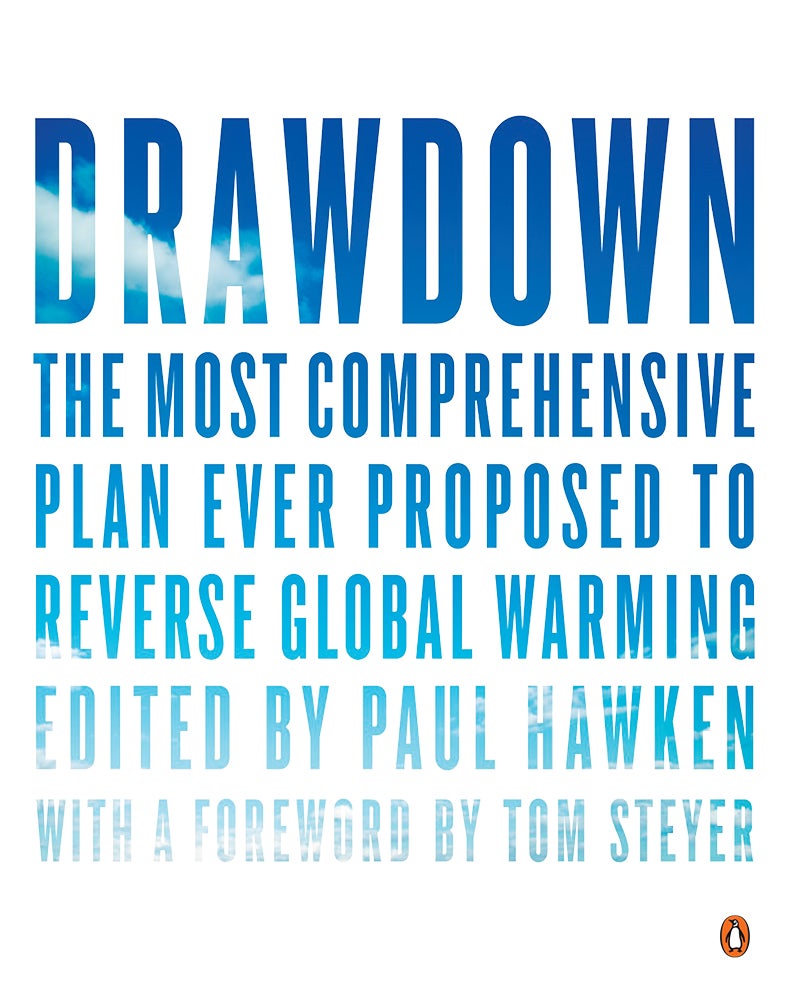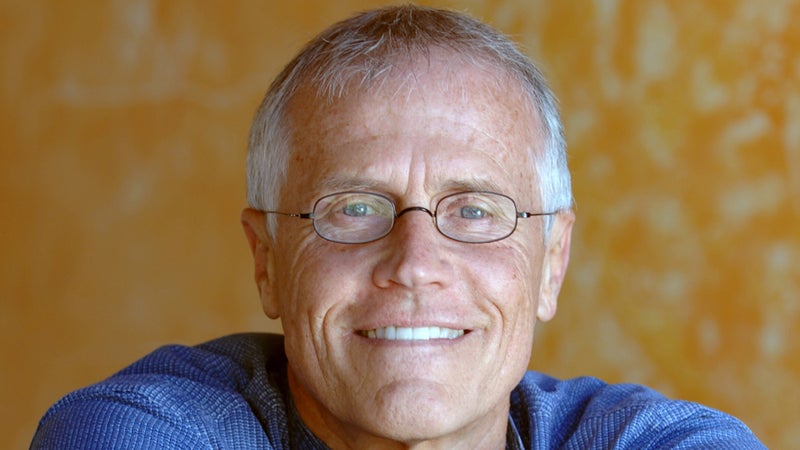This is a grim spring for those concerned about our warming planet. Last year was , eclipsing 2015, which in turn beat out 2014. In December, climate scientists collectively freaked out after recording temperatures in the Arctic 36 degrees Fahrenheit above normal. This latest sign of global heat rash came just weeks after the election of a U.S. president who has called climate change a hoax, who vows to put bankrupt coal giants back in business, and who recruited his secretary of state from ExxonMobil.

So why hope? Because the solutions to climate change may be at hand. That’s what Paul Hawken argues in Drawdown: The Most Comprehensive Plan Ever Proposed to Reverse Global Warming (). A California entrepreneur and bestselling author, Hawken is widely known for , a 1999 book he cowrote with noted environmental scientist Amory Lovins and sustainable-development pioneer L. Hunter Lovins that made the case for a fourth industrial revolution—one that would enable a new economy accounting for both human and ecological well-being. In it, Hawken stated that our fossil-fuel economy is based on specious and unsustainable math, since it ignores environmental costs. He also optimistically predicted the end of coal, oil, and gas in favor of energy sources and innovations that would drive great human profit. President Bill Clinton called Natural Capitalism one of the age’s most important books.
In the two decades since, many of Hawken’s predictions have proved prescient: socially responsible investing boomed, King Coal fell, electric cars took off, and a global movement to divest from fossil fuels was launched. Still, the planet keeps heating up. In 2013, even with President Obama pushing a climate-friendly agenda, Hawken read a couple of particularly disheartening studies suggesting, as he writes in Drawdown, that it was pretty much “game over.” Refusing to give in, he responded by assembling a team of 200 scientists, writers, and advisers in order to mathematically identify that, taken together, could not only stop the bleeding, but also restore the planet’s natural carbon cycle by “drawing down” human-caused emissions. “Our organization did not make or devise a plan,” Hawken writes. “We found the plan because it already exists in the world.”
Spoiler alert: neither the Trump administration nor the fossil-fuel lobby are likely to support this plan. Taking the form of an encyclopedia organized into categories (Energy, Transportation, Food, and so forth), Drawdown is less a book than a manual for wholesale societal change—think How Stuff Works for fans of Al Gore and Bill McKibben. Hawken writes in cheery, nontechnical prose that often veers into the language of Bay Area entrepreneurs. (Example: “Autonomous vehicles may be the ultimate disruptive technology.”) To give readers a break from all the explaining, Hawken intersperses essays by guest authors like Michael Pollan and Pope Francis. The meat of the book, however, is in the solutions. Each one of them is assigned a ranking—the amount of carbon it could eventually draw down—and a per capita societal cost. The long-term price tag to fix the planet? Just $1.88 per person per year.

Unfortunately, solving the climate crisis is not as easy as buying a cup of coffee. In its bullish optimism, Natural Capitalism omitted the painful side of a clean-energy transition—the fact that, for coal miners, progress most likely means unemployment. In Drawdown, Hawken acknowledges that reaching an equitable relationship with the earth will require large-scale change. But he insists we have no choice. To hear him tell it, plant-based diets must supplant meat-based ones; small-scale, regenerative farming needs to displace fertilized monoculture; and the auto industry as we know it should disappear in favor of self-driving cars powered by solar-charging highways. Our grid of huge power plants and transmission lines must be enhanced by nimbler local systems—a feat that, Hawken writes, will be impossible without government intervention, given the entrenched influence of America’s utilities. “Establishing microgrids in Uganda or Manipur will be easier than operating them in Utah or Minnesota,” he writes.
Hawken highlights a few next-generation solutions, like hydrogen-boron fusion, a form of nuclear energy that’s both astonishingly powerful and (supposedly) safe. But for the most part, he downplays the kind of high-tech silver bullets that allow us to kick back and let engineers solve the problem. Rather, Hawken writes, it’s time to “reimagine everything we make and do”—to “take one-hundred percent responsibility and stop blaming others.” Consequently, many of the solutions in the book are unsurprising—quotidian even. On the plus side, they also seem attainable. Reimagining the global refrigeration and cooling industry, Hawken suggests, will have a greater effect than the rise of rooftop solar power. He dubs perennial crops (rather than fertilizer-eating annuals) a next-generation solution. He also acknowledges that climate science is evolving and the solutions are certain to change; the book is designed to be a catalyst for the growth of an online community at .
But here’s another spoiler alert: drawdown will not be happening in the immediate future. Recently, everyone from Barack Obama to heads of traditional energy companies have argued that President Trump can’t stop the market forces driving the surge in renewables. In many ways this is true. The price of rooftop solar is falling; wind is an increasingly profitable investment; despite his promises, Trump can’t unilaterally resuscitate the coal industry. Still, Hawken isn’t just pushing for an energy transition. He’s calling for a revolution, one that won’t happen without innovation, restraint, and—wait for it—government action. We clearly need to draw down, but for the moment, the best we can do is fight to hold on.
Assessing Some of the Book's More Ambitious Solutions
Game Changing
- Hydrogen-Boron Fusion: An earthborn nuclear star could provide all humanity’s energy needs without carbon and, according to Hawken, “banish coal, gas, and oil into the dustbins of a once-primitive past.”
- Marine Permaculture: Floating seaweed crops anchored by kelp could turn marine deserts into fish-rich ecosystems sequestering carbon.
- Smart Highways:Roads with embedded solar panels that automatically recharge the electric cars driving on them may sound like a fantasy, but a Dutch designer has already created a prototype.
Playing Games
- Hyperloops: Pneumatic tubes get supersized in Elon Musk’s Jetsons-esque vision of a commuter train. Sweet! But estimates put the cost of a San Francisco to Los Angeles line at $100 billion.
- Enhanced Weathering of Minerals: Rocks absorb carbon dioxide, breaking it down into calcium carbonate. So why not open mineral mines, then crush the rocks into silicate dust? Because it’s insanely expensive.
- Repopulating the Mammoth Steppe: The loss of megafauna from Siberia may be accelerating warming by changing the ecology of grasses and releasing tons of methane from under the ice. The fix: import ungulates like the muskox!


